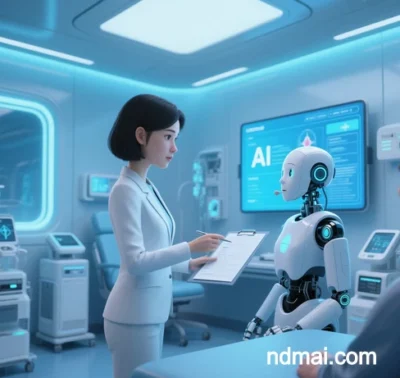
NDM AI in Healthcare: Technological Advantages and Applications (2025)
Naturalistic Decision Making (NDM) artificial intelligence combines human expert decision-making logic with deep learning, multimodal data fusion, and causal reasoning to redefine medical decision paradigms. Below is an analysis of its core technical strengths across cognitive augmentation, complex data processing, dynamic adaptability, and human-AI collaboration.
I. Cognitive Augmentation: Quantifying Expertise
1. Algorithmic Intuition
- Technology:
NDM AI replicates clinicians’ pattern recognition in ambiguous scenarios. For example, attention-based LSTM models analyze unstructured ICU notes (e.g., “reduced urine output” and “confusion”) to predict sepsis risk with high sensitivity. - Case: Mayo Clinic’s NDM system improved early detection of acute kidney injury by mimicking nurses’ intuitive judgment of deterioration.
2. Dynamic Knowledge Integration
- Technology:
Federated learning with ontology alignment standardizes terminology across EHR systems, addressing data heterogeneity. - Value: In oncology MDT meetings, NDM AI integrates pathology, imaging, and genomic data to generate visualized treatment plans that meet FDA explainability standards.
II. Complex Data Processing: From Multimodal to Causal
1. Multimodal Fusion
- Technology:
Transformer-based architectures (e.g., MADDi) synchronize medical images, gene expression, and EHR text, achieving superior accuracy in Alzheimer’s diagnosis. - Case: Tempus AI reduced misdiagnosis of lung cancer lymph node metastasis by combining CT scans, ctDNA, and patient narratives.
2. Causal Decision Optimization
- Technology:
Counterfactual GANs simulate treatment outcomes, moving beyond correlation-based analysis. For example, NDM AI quantifies BRCA1-mutated patients’ response to PARP inhibitors, improving breast cancer therapy efficacy.
III. Dynamic Adaptability: Real-Time Responsiveness
1. Streamlined Edge Computing
- Technology:
Miniaturized NDM systems (e.g., AI-Nose 2) process ICU bedside data with ultra-low latency and power consumption. - Case: Integrated with HoloLens 2, NDM AI provides real-time endoscopic navigation cues (e.g., “avoid left ureter”), reducing surgical instrument collision risks.
2. Robustness in Uncertainty
- Technology:
Quantum reinforcement learning (QRL) enhances model stability in liver organoid drug metabolism simulations, reducing experimental iterations.
IV. Human-AI Collaboration: A New Paradigm
1. Expert-in-the-Loop Decision-Making
- Technology:
Grey-box AI allows physicians to adjust model weights. For example, neurosurgeons refine tumor boundary predictions via interactive heatmaps. - Value: Active learning prioritizes uncertain cases in rare disease diagnosis, maintaining high specificity with fewer labeled datasets.
2. Cross-Institutional Networks
- Technology:
Blockchain-based federated learning enables secure data sharing across hospitals and pharma. For Parkinson’s screening, model performance improved significantly.
Challenges and Innovations
| Challenge | Solution |
|---|---|
| Ethical Compliance | Homomorphic encryption for privacy-preserving inference |
| Cognitive Bias Mitigation | Adversarial causal intervention |
| System Integration | Neuromorphic chip-based NDM-LLM architectures |
Future Outlook
1. Quantum-Enhanced NDM (2026–2028)
- Quantum entanglement accelerates multimodal analysis, compressing immunotherapy planning from hours to minutes.
2. End-to-End Autonomy (2030+)
- Fully automated NDM诊疗 chains handle routine decisions, requiring physician oversight only for critical interventions.
Conclusion
NDM AI bridges human intuition and machine computation, achieving breakthroughs in precision, efficiency, and risk management. It paves the way for autonomous, ubiquitous, and causality-driven healthcare systems.
Data sourced from publicly available references. For collaborations or domain inquiries, contact: chuanchuan810@gmail.com.





